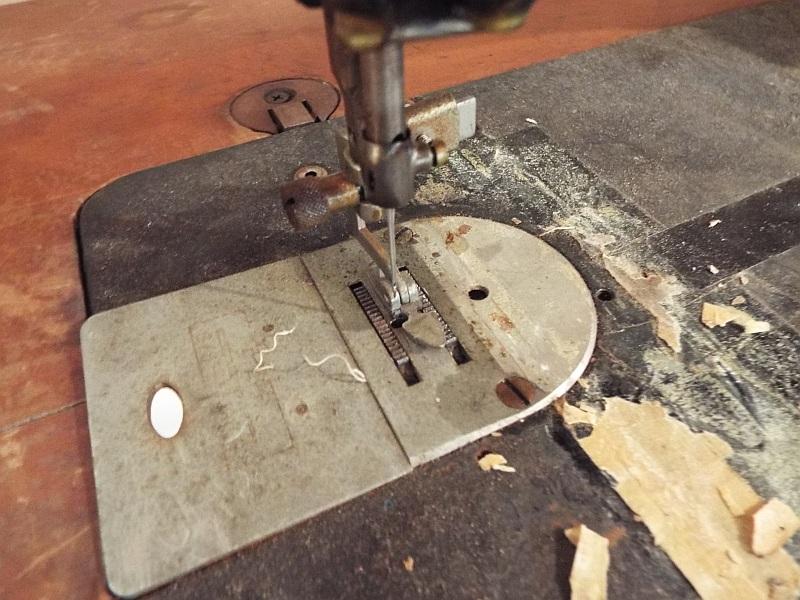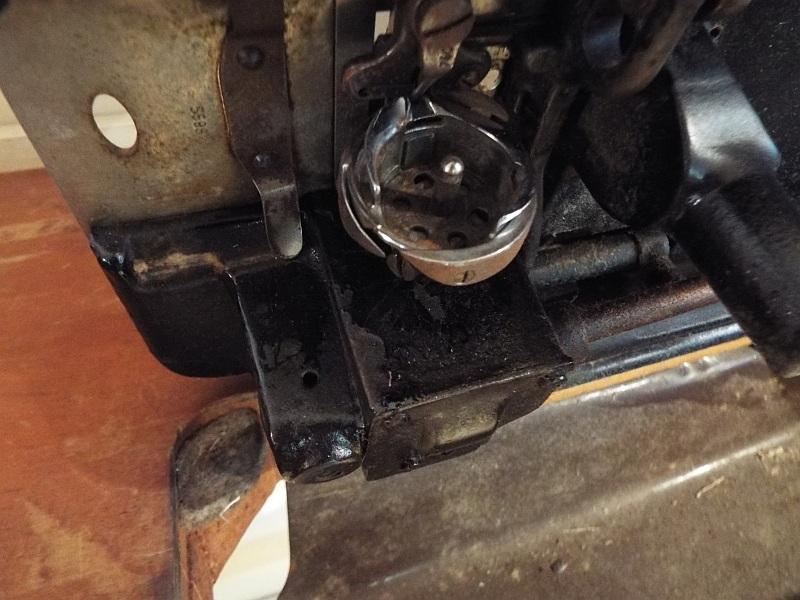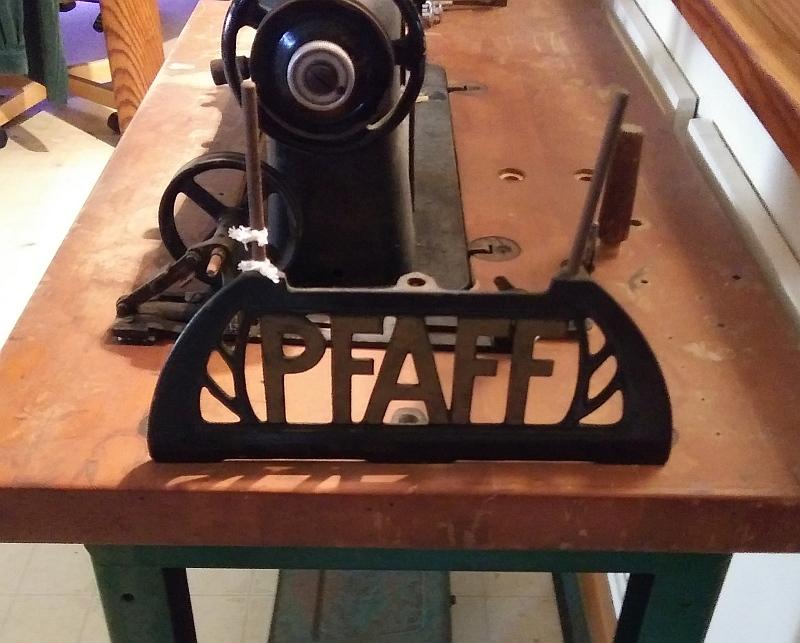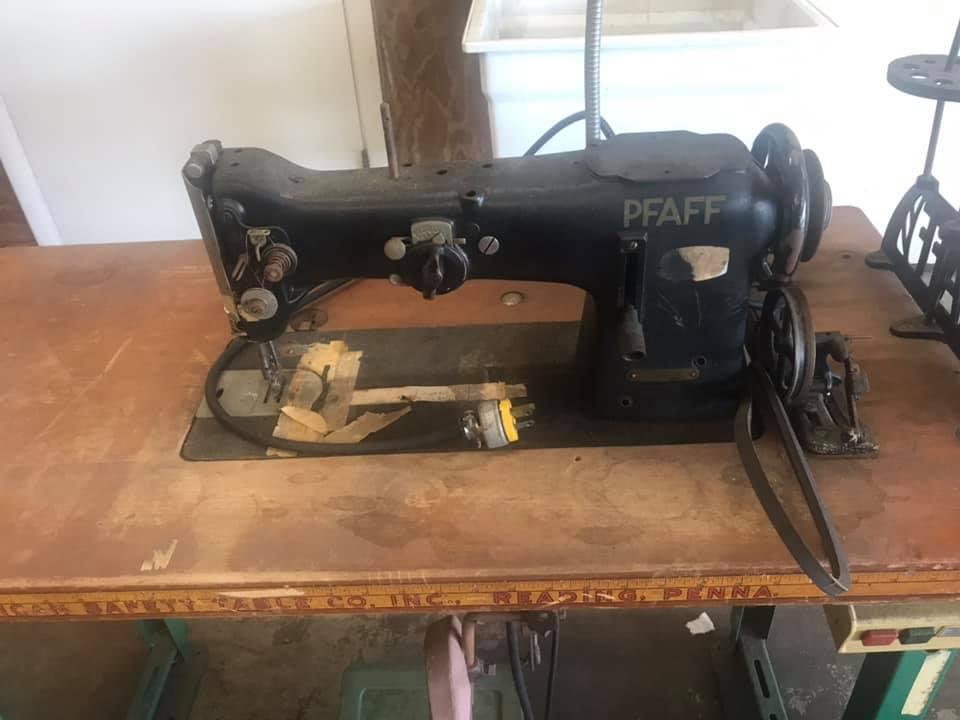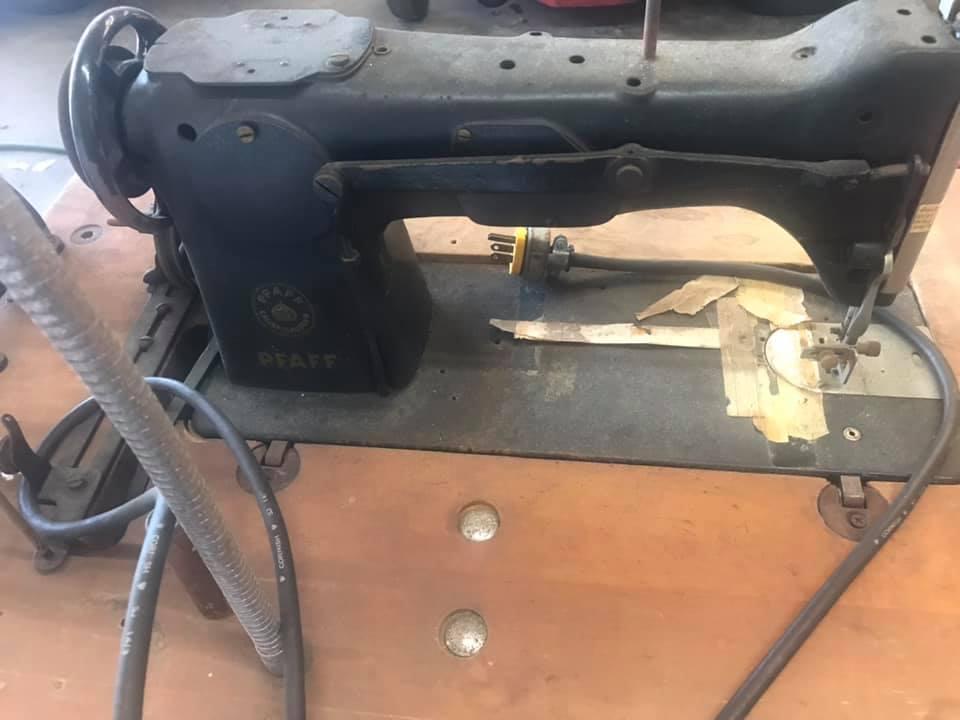-
Posts
193 -
Joined
Content Type
Profiles
Forums
Events
Blogs
Gallery
Everything posted by trash treasure
-
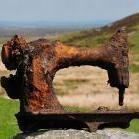
(first post) Used Sewing machines
trash treasure replied to Donkeykong's topic in Leather Sewing Machines
I can view the link - At first, I thought the first machine shown, the "SMX", might be a candidate, but on closer inspection, it looks to be a double needle Singer 112, and missing a bunch of parts. I don't see anything else there that's really suited to what you want to do - But maybe keep checking that place, as you never know what might turn up. -

Pfaff 138 sub class question
trash treasure replied to trash treasure's topic in Leather Sewing Machines
Thank you, Gregg. OK, so the question is, what does it mean for the machine (U) to have a "triangular eccentric"? The zigzag control is totally clogged up, and stuck in left-needle straight stitch. So at this point, all I can do is turn it over manually, and watch it go up and down and the feed dog go back and forth. Is it supposed to do something different from the normal 138-6 ? As for the "cording device" - I've seen pictures of some kind of special cording needle plates, in the parts lists, but this machine just has a regular flat one ......... -

Pfaff 138 sub class question
trash treasure replied to trash treasure's topic in Leather Sewing Machines
Thank you! When I get into it, I'll see if anything else is needed - Hopefully, not much. -

Pfaff 138 sub class question
trash treasure replied to trash treasure's topic in Leather Sewing Machines
OK - Here's the exiting follow up, you've all been waiting for ;~) I went ahead and bought the machine, and as far as I can tell, there's nothing out of the ordinary in the set up, from most other 138's, but I'm for sure, no expert on this. The weird foot turned out to be just an adjustable zipper foot, with a normal-looking feed dog and needle plate. It's missing the bobbin case, and I don't know enough to tell if the hook is a standard one - Probably. I think it's just a 4.5mm machine. And , of course, the real reason for buying it - It had a cool cast iron "Pfaff" thread stand, that my wife wanted for her Pfaff 130 mission-style treadle stand :~) The machine was totally packed up with fossilized oil, and wouldn't even turn over at first (it does now), has a really dull finish, and a really nice solid butcher block H-leg table, with the original Pfaff bobbin winder (I think) - With a little work, and a new foot and bobbin case (and maybe the parts for the second tension unit), I can hopefully bring it back . Thanks again for your input, the other day. -

Pfaff 138 sub class question
trash treasure replied to trash treasure's topic in Leather Sewing Machines
Unfortunately, I don't think I can get any more info from the seller - It's at her place of employment, and she was a little funny to deal with, to start off. The machine was on Facebook Marketplace, and I've really learned to hate buying things through there, because of the way some people are - She wouldn't even give me a phone number at first - I guess she was afraid I'd steal her identity, or stalk her, or something ...... Anyway, I guess I'll find out tomorrow, as I'm planning to drive down there (a couple hundred miles, actually), and see for myself. I haven't ever seen one for sale locally before, so I'm willing to take a chance and have a look. And thanks for the links, C - I have looked at those before, and they're more than a little confusing to me - I need to read more :~) -

Pfaff 138 sub class question
trash treasure replied to trash treasure's topic in Leather Sewing Machines
OK, Some photos from the seller, but as I said, not very good ones . It does look like it might have something on the needle bar, and it does have some kind of funny foot - It looks like the standard feeder set, though. I guess what I'm trying to determine, is if it can be easily converted back to a general purpose machine, by swapping the foot, and maybe the needle bar, each of them, I found for under $20 Anyway, the fuzzy photos: -

Smaller Sewing Machine Stand/Table
trash treasure replied to NewfoundlandLaw's topic in Leather Sewing Machines
I've cut several standard machine tables down to 36" length, even adding a hinge to the cut off piece, to make a folding table a couple times. It's not too big of a job, if you have some tools and are even a little handy. You should cut the table top upside down though, to keep from chipping the laminate. -
Hi - I haven't been current on the forum lately, but I hope someone can provide a little guidance, anyway . I'm looking to buy an older Pfaff 138, and I'm wondering about the sub class, as I don't want to get something I can't use - It's a pretty long drive to get it :~) It's not a lot of money, AND, it has one of those cool "Pfaff" thread stands, so it's attractive to me because of that, anyway! It's a Pfaff 138-115U - The machine is obviously an early one, as it's black instead of beige hammertone - I really can't find much info, except that the "U" models were maybe sold as "cording" machines - From the somewhat fuzzy photos, it looks like it might have some kind of funny foot, but the needle plate looks like it has the normal 2 row feed dog, and looking at what parts lists I can find, the feed parts for these machines look all the same. So, If all it needs is to get a regular zig zag foot for it, maybe it's OK? Anyone have any knowledge about this? Uwe? Constabulary? Thanks.
-
Are you sure you have the needle in correctly? Hard to tell from the photos, but it looks like it might be turned the wrong way - The thread groove should be to the left, and the "scarf" (the shallow notch above the eye) should face right, facing the hook - If it's in wrong, I'm impressed that it sews at all :~)
-

Help with very dirty Singer 111w155
trash treasure replied to PMCREATIONS's topic in Leather Sewing Machines
If you're using a 2 part polyurethane paint / clear coat, that could be the irritation problem right there. Are you spraying it? The isocyanate in that stuff is extremely toxic - People who use it professionally only work with full face respirator (with appropriate filter cartridges), and a Tyvek "moon suit", at a minimum - Supplied air is better / preferred. Please be careful - It's nothing to fool with. -
3 lower shafts - The hook, feed "stroke", and feed lift - All 3 need to be timed, IF they go them back in, with no binding. Make match marks, take lots of photos and notes - You'll be more likely to get them close to start with, then - Good luck
-
It looks like a Consew - The first photo, of the back of the arm, shows a presser foot lift link that's definitely a Consew part - NOT Singer. As far as welding it goes, since these castings were line bored for the shafts, my concern would be getting the shafts back in after the heat treatment, not just timing them - I guess if you're able to clamp the thing dead flat during the process, you might be OK. Let us know how it turns out
-

Long shot...Siruba machines?
trash treasure replied to Sugarkryptonite's topic in Leather Sewing Machines
Hi, again - The only thing I can think of, in relation to the difference in behavior between the wooly nylon and the regular overlock thread, is the threading path. On the Kansai (again, not a Siruba), there is an alternate threading path for stretch thread, in 3 different places - I went back and looked at your threading schematic, and it looks like you might have a couple choices on your machine - If you look at the diagram, you see some of the threads are shown with a solid line, AND a dotted one, which (on the Kansai, anyway) indicates an alternate threading for stretch thread. Have you checked this? -

Another Singer 31-15 issue
trash treasure replied to BruceWampler's topic in Leather Sewing Machines
Have you checked that the needle bar height is correct? It may have been lowered to use the home machine needles. Or maybe I'm misunderstanding the problem ...... -
Wow, for having never used a machine before, you're starting right at the top of the hill! I'm envious
-
Uwe had links to the manuals here : https://leatherworker.net/forum/topic/65963-owner-service-manual-
-

Long shot...Siruba machines?
trash treasure replied to Sugarkryptonite's topic in Leather Sewing Machines
Hi again - I'm still thinking that it might be something with the take up - That mechanism is very important for stitch formation on these machines. There are several external and internal adjustments there - The height and orientation of those guides is just one of them. But I don't think I should give you the Kansai specs for them, unless you totally strike out with Siruba. Like I said before, it could be very wrong for your machine. Speaking of that - What's with Siruba? It seems they're just dribbling out partial info, when you beg for it - I mean, if they have the manual for one of their old machines, why don't they just give it (Or sell it) to you complete, and be done? OTOH, if they don't have it, they should say so. As far as relying on what someone else's machine has for a take up adjustment, I wouldn't count on that at all, just because they say "It sews fine" - I've bought more than one used machine that was described that way, and found that it was FAR from the truth. It may be, that with the person's crazy binder set up, that's the only way they could get it to sew at all - You just don't know. The order to set up the machine for different fabric / thread would be tension first, then maybe foot pressure, if the thickness or texture was much different, and then differential last, after observing the test seams for lengthwise puckering, etc. You may be jumping around too much, in an effort to get it sewing As to it feeding at an angle, it could be a couple things - Needle bar straight? Foot straight ( These also have a sort of hinged compensating arrangement, and a forward / back adjustment)? Correct foot? There is a special, short, binder foot for these machines, that could have been swapped in at some point. Feed dogs level and square with the needle plate? I don't think just increasing the foot pressure is necessarily the correct way to fix it, unless it was VERY light to begin with - That always just makes a machine work harder, if it's not really needed. A last thought - Something like Supplex, being a "flatter" woven, vs. a softer knit, is always going to amplify any stitch irregularity - Just sayin'. -

Long shot...Siruba machines?
trash treasure replied to Sugarkryptonite's topic in Leather Sewing Machines
Fascinating, as Wiz (and Mr Spock) would say ....... It's hard for me to tell anything from your videos - I can't get them to play clearly enough on my computer OK, I think you may want to check the thread take up guides (second to last of your machine photos) - They need to be set very specifically , and I've found that they make a BIG difference in stitch quality - The Kansai went from randomly skipping stitches, to perfect, just by adjusting them. One very curious thing - On your machine, the take up guides (the 3 bent rods with holes at top), are set oddly, to my thinking - I have instructions for 2 of these machines, the Kansai, and a Pegasus (somewhat similar), and on both of them, the guides are set exactly OPPOSITE from yours - IE. height progression is from high outer to low inner - Opposite yours. Is your set up what Siruba calls for, or is that just the way it came? I attached a photo of the Kansai set up, so you can see what I'm talking about. I suggest you go through the adjustment for the whole take-up mechanism, and see what's what - And as you might guess, there's also an internal TIMING adjustment for it, as well as the external ones As to initial tension set up, my wife (Who is the master at this machine - I'm only the mechanic), says that you don't set EITHER upper or lower tension first - Back everything off, and then start tensioning it all up gradually - Tensions should be increased EVENLY, for the most part - If you have to tension one thread much more, then something else is most always wrong - And none of the tensions should need to be really tight - If so, look elsewhere for the problem. -

Long shot...Siruba machines?
trash treasure replied to Sugarkryptonite's topic in Leather Sewing Machines
Hi, again - The spreader hitting the needle thread ( I assume the right needle?) on the back stroke doesn't sound right, and especially plucking it like a guitar string - How tight do you have the needle tensions set? at any rate, I think the spreader should miss the threads, as it moves left to right. Have you checked the needle bar height? When you buy a machine like this, you have to assume it's passed through a number of hands, some of whom may have poked around in it's innards, with little understanding of what they were doing - You need to check everything........... The puckering you experienced is most likely a differential issue - Puckering ACROSS the stitch, look at tension, puckering ALONG the stitch, look at differential adjustment - We use the machine mostly for stretch knits (spandex) . Supplex (Taslan), is a nylon woven - Very different fabric, with nowhere near the stretch of spandex - The differential adjustment will be thus be quite different. Experiment, and be willing to adjust. When I go through the adjustments on an unfamiliar machine, I usually do them in the order they're printed in the manual, unless I know something particular about it. I'll be honest with you, we paid more than 3 times the price of your Siruba, for the Kansai we have, but the price and condition was not the only reasons why I chose that machine - It was that I was able to get a complete adjusters manual for the exact machine, that was the deciding factor - In fact, I had the manual in hand before we even got the machine - That alone was so important to me, that I would have passed on the Kansai, if I couldn't have that resource........ This should tell you something. And, yeah, dikman, it's a crazy stitch, and a crazy machine - The engineers that figured out how to do it must also have been crazy, or maybe, they just were driven to promote the production of tight women's leggings, and stretchy swimsuits, for some reason - Go figure -

Long shot...Siruba machines?
trash treasure replied to Sugarkryptonite's topic in Leather Sewing Machines
Hi again - Your stitch "looks" like there might not be enough tension on the spreader thread - The little tension unit is very similar to the one on the Kansai, and the the thread absolutely needs to feed through it , but with just a relatively light tension - Is that how you have it ? In fact, the Kansai unit does not even adjust, the way yours does, just a fixed screw holding the discs - At any rate, the tension there should be light The spreader thread should lay flat, with the back-and-forth runs lying next to each other, not being rolled over by the middle needle thread (maybe the center needle tension is also a bit tight ?), so be patient, and double check everything. Are you using the same size thread for all 5 threads ? Hard to tell from your macro photos, but they need to be the same, for most uses - I believe you can set these machines up to use different threads for certain effects, but you shouldn't worry about that at this point. One more thing - For starting out, you might check that the differential feed adjustment is set to "neutral" - Get it to sew reliably like that, before adjusting it for different fabrics - It's there to control seam stretch. If it's set way out, one way or the other, it might affect the sewing speed capability. Also - On the spreader adjustments - Is there a spreader TIMING adjustment on your Siruba ? - There is on the Kansai, but it's an internal one, and you access it from inside the arm cover - Match marks on an eccentric, that you shift one way or the other. If someone in the past has messed with that, it could really frustrate you, trying to get it right with the external adjustments. So see if your manual covers that. If you do find the adjustment off, set it to the original factory setting, and then you'll have to go BACK, and re-set all the external adjustments again . Aren't these machines FUN ? Just endless hours of entertainment ................ -

Long shot...Siruba machines?
trash treasure replied to Sugarkryptonite's topic in Leather Sewing Machines
What I showed is close to a perfect stitch with one of these machines - The threads should lay flat across the stitch, without pulling the sides together, and with no loops outside the outer stitch lines - That's what you should aim for. Like I suggested, set it up with different colors, to see what each tension does - And, BTW, make sure you're using overlock-type thread - These machines don't like to sew with regular twist thread - It doesn't need to be expensive stuff - The cheap "Maxi-Lock" brand works fine. -

Long shot...Siruba machines?
trash treasure replied to Sugarkryptonite's topic in Leather Sewing Machines
I really do hope someone with more knowledge than I, can weigh in on this - I feel like I'm getting a little out of my depth here - Thanks, Wiz. The spreader could be a couple different issues - Are you actually placing the thread in the spreader before you start ? You have to do that, as it often won't pick it up the first time, without a little help. It could also be the spreader being a little out of time. Also, it looks like the machine still has a lot of lint in places - You should really blow it out with the air, pull it out with your tweezers, etc - Try and get it clean as possible. On the tensions, the best advice I can give is to start with all tensions CLEAN and working properly, set them to a minimum tension to start with, and thread each one with a DIFFERENT COLOR thread, and then practice and experiment, to see what each tension does. The machine SHOULD be able to sew off the sample, like in the video, if it's set up right - Our Kansai does it perfectly. That itself could be affected by tension - I attached a couple photos of the stitch we get from the Kansai - Keep in mind, that it took some adjustment and tweaking, and experimentation to get there - Patience, Grasshopper ............. -

Long shot...Siruba machines?
trash treasure replied to Sugarkryptonite's topic in Leather Sewing Machines
OK - Nothing really holds the thread in the spreader - The point is shaped that way, so the spreader can pick up the thread and push it across the stitch on each pass. The thread is not actually, permanently held in the spreader. It's possible the deal with the looper is that the orbit may or may not be set up correctly - It should pass very close to the needles both front and back, but I don't think it should deflect them that much. The "orbit" describes the actual path the point of the looper takes around the needles in it's travel - It's sort of a oval-shaped path, and the orientation and timing of this path should be adjustable, with an eccentric timing crank, inside the machine - It should have match marks, that are shifted a tiny amount, forward or back, to change this timing.............. The thing is, that I can't tell you where it is on your Siruba - Probably in the upper arm, but more than that, I don't know - Sorry The "point" of the looper is just the forward-most point of the thing, and the "needle center" is the center line of the needle shank - I don't know how else to describe it............. But, as I said, those numbers (and ALL the numbers I've quoted) are for the Kansai WX series, so beware, YMMV. I think you have it threaded correctly, and the extra holes in the plate above the tensions may just be there so you can have the option of using them for certain thread types, or just to have a place to tie off different colors, so they'd be handy to change, or ...........? I don't think you'd use more than one hole of each set, normally. I wish I could help more, but I'm not a factory mechanic, and can only reference the relatively few machines I've worked on - There was a guy on here that IS a professional factory mechanic, with a lot of experience with many machine types, but he hasn't posted for a while now. I'm just afraid of leading you in the wrong direction, so PLEASE just be sure that any adjustments you make are SMALL ones, and check every time by turning the machine over by hand, to see what is happening, before putting power to it. -

Long shot...Siruba machines?
trash treasure replied to Sugarkryptonite's topic in Leather Sewing Machines
Thank You, Wiz ! -

Long shot...Siruba machines?
trash treasure replied to Sugarkryptonite's topic in Leather Sewing Machines
Hi again - I hope the moderators tolerate all this, as it really has nothing to do with leather sewing....... That part in your little video is called a "looper", and I think it's set too close to the needles - It should just barely touch the right hand needle, and maybe clear the left one by 0.2mm or so - There are really 3 adjustments for this part - FRONT & BACK, HEIGHT (On the Kansai, the point should be about 1.5mm above the LEFT needle eye, when it's at the needle center), and the looper ORBIT, BUT I'm not going there on that one, as I really don't have a clue about the orbit adjustment on a Siruba, and describing the Kansai adjustments might lead you far astray - I may have done so already . And, good luck fixing your leak :~)




